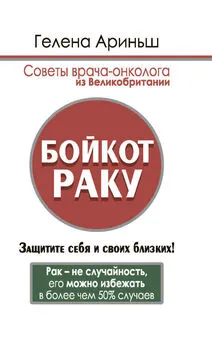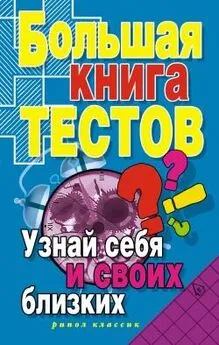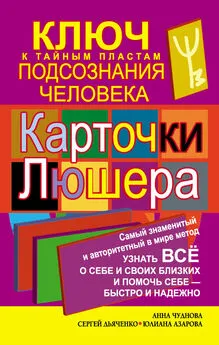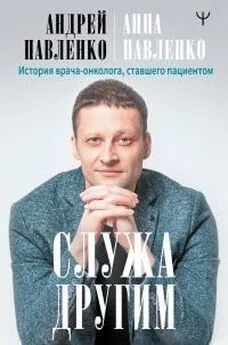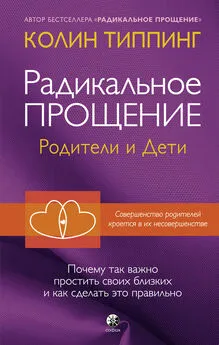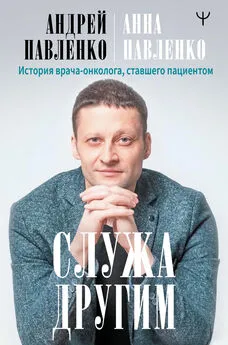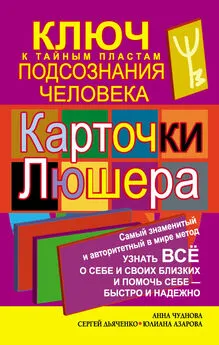Гелена Ариньш - Бойкот раку. Защитите себя и своих близких! Советы врача-онколога из Великобритании
- Название:Бойкот раку. Защитите себя и своих близких! Советы врача-онколога из Великобритании
- Автор:
- Жанр:
- Издательство:Издательство АСТ
- Год:2016
- Город:Москва
- ISBN:978-5-17-094058-5
- Рейтинг:
- Избранное:Добавить в избранное
-
Отзывы:
-
Ваша оценка:
Гелена Ариньш - Бойкот раку. Защитите себя и своих близких! Советы врача-онколога из Великобритании краткое содержание
В этой книге вы найдете все необходимые факты о том, как значительно снизить риск развития злокачественного процесса. Ежедневные мелочи, на которые мы порой не обращаем внимания, существенно влияют на наше здоровье. Ваша осведомленность может спасти жизнь вам и вашим близким!
В книге также приведена информация о профилактическом осмотре и методах ранней диагностики для выявления заболевания на ранней стадии, когда полное излечение вполне вероятно.
Бойкот раку. Защитите себя и своих близких! Советы врача-онколога из Великобритании - читать онлайн бесплатно полную версию (весь текст целиком)
Интервал:
Закладка:
60. Penninx BW. Chronically depressed mood and cancer risk in older persons. Journal of the National Cancer Institute 1998; 90: 1888–93.
61. Giese-Davis J, Collie K, Rancourt KM, et al. Decrease in depression symptoms is associated with longer survival in patients with metastatic breast cancer: a secondary analysis. J Clin Oncology 2011; 29: 413–20.
62. Spiegel D, Bloom JR, Yalom I. Group support for patients with metatatic cancer. A randomized outcome study. Arch Gen Psychiatry 1981; 38: 527–533.
63. Spiegel D, Bloom JR. Group therapy and hypnosis reduce metastatic breast carcinoma pain. Psychosom Med 1983; 45: 333–9.
64. Andersen BL, Yang HC, Farrar WB, et al. Psychologic intervention improves survival for breast cancer patients: a randomized clinical trial. Cancer 2008; 113: 3450–8.
65. Andersen BL, Thornton LM, Shapiro CL, et al. Biobehavioral, immune, and health benefits following recurrence for psychological intervention participants. Clin Cancer Research 16: 3270–8.
66. Spiegel D. A 43-year-old womancoping with cancer. JAMA 1999; 282: 371–8.
67. Kiecolt-Glaser JK, Glaser R. Psychoneuroimmunology and cancer: fact or fiction? European Journal of Cancer 1999; 35: 1603–7.
68. Antonijevic IA . Depressive disorders – is it time to endorse different pathophysiologies? Psychoneuroendocrinology 2006; 31: 1–15.
69. Riley V . Mouse mammary tumors: alteration of incidence as apparent function of stress. Science 1975; 189: 465–7.
70. Riley V. Psychoneuroendocrine influences on immunocompetence and neoplasia. Science 1981; 212: 1100–9.
71. Sapolsky RM, Donnelly TM. Vulnerability to stress-induced tumor growth increases with age in rats: role of glucocorticoids. Endocrinology 1985; 117: 662–6.
72. Sapolsky R, Krey L, McEwan BS. Prolonged glucocorticoidexposure reduces hippocampal neuron number: implications for aging. J Neurosci 1985; 5: 1222–1227.
73. Jayo JM, Shively CA, Kaplan JR, et al. Effects of exercise and stress on body fat distribution in male cynomolgus monkeys. Interbational Journal of Obesity&Related Metabolic Disorders 1993; 17: 597–604.
74. Epel E, McEwen B, Seeman T, et al. Psychological stress and lack of cortisol habituation among women with abdominal fat distribution. Psychosom Med 1999; 61:107.
75. Plotsky PM, Owens MJ, Nemeroff CB. Psychoneuroendocrinology of depression. Hypothalamic-pituitary-adrenal axis. Psychiatr Clin North Am 1998; 21: 293–307.
76. Posener JA, Schildkraut JJ, Samson JA, et al . Diurnal variation of plasma cortisol and homovanillic acid in healthy subjects. Psychoneuroendocrinology 1996; 21: 33–8.
77. David Spiegel. Mind matters in cancer survival. Psychooncology 2012; 21(6): 588–593.
78. Sheridan JF, Dobbs C, Jung J, et al. Stress-induced neuroendocrine modulation of viral pathogenesis and immunity. Ann N Y Acad Sci 1998; 840: 803–8.
79. Sheridan JF. Stress-induced modulation of anti-viral immunity – Normal Cousins Memorial Lecture1997; Brain, Behav, Immun 1998; 12: 1–6.
80. Padgett DA, Loria RM, Sheridan JF. Endocrine regulation of the immune response to influenza virus infection with a metabolite of DHEA-androstenediol. J Neuroimmunol 1997; 78: 203–11.
81. Glaser R, Kiecolt-Glaser JK. Stress associated immune modulations: relevance to viral infections and chronic fatigue syndrome. American Journal of Medicine 1998; 105: 35S–42S.
82. Kiecolt-Glaser JK, Glaser R, Cacioppo JT, et al. Marital stress: immunologic, neuroendocrine, and autonomic correlates. Ann N Y Acad Sci 1998; 840: 656–63.
83. Cohen S, Tyrrell DA, Smith AP. Psychological stress and susceptibility too the common cold. N Engl J Med 1991; 325: 606–12.
84. Garssen B, Goodkin K. On the role of immunological factors as mediators between psychosocial factors and cancer progression. Psyciatry Res 1999; 85: 51–61.
85. Reynolds P, Hurley S, Torres M, Jackson J, Boyd P, Chen VW . Use of coping strategies and breast cancer survival: results from the Black/White cancer survival study. Am J Epidemiol 2000; 152: 940–948.
86. Garssen B, Remie M. Different concepts or different words? Concepts related to non-expression of negative emotions.In Emotional Expression and Health 2004, Nyclicek I, Temoshok L, Vingerhoets A, pp 117–136. Hove and New York: Brunner-Routledge.
87. Butow PN, Coates AS, Dunn S. Psychosocial predictors of survival: metastatic breast cancer. Ann Oncol 2000; 11: 469–474.
88. Butow PN, Coates AS, Dunn SM. Psychosocial predictors of survival in metastatic melanoma. J Clin Oncol 1999; 17: 2256–2263.
89. Folkman S, Chesney M, McKusick L, Ironson G, Johnson DS, Coates TJ. Translating coping theory into an intervention.In: The Social Context of Coping, Eckenrode J, pp 239–260. New York: Plenum Press.
90. Burgess C. Stress and cancer. Cancer Surv 1987; 6: 403–416.
91. Temoshok L. Personality, coping style, emotion and cancer: towards an integrative model. Cancer Surv 1987; 6: 545–567.
92. Dolbeaut S, Szporn A, Holland JC. Psycho-oncology: where have we been? Where are we going? Eur J Cancer 1999; 35: 1554–1558.
93. Gross J. Emotional expression in cancer onset and progression. Soc Sci Med 1989; 28: 1239–1248.
94. Greer S, Watson M. Towards a psychobiological model of cancer: psychological considerations. Soc Sci Med 1985; 20: 773–777.
95. Petticrew M, Bell R, Hunter D. Influence of psychological coping on survival and recurrence in people with cancer: systematic review. BMJ 2002; 325: 1066–1069.
96. Grossarth-Maticek R, Bastiaans J, Kanazir DT. Psychosocial factors as strong predictors of mortality from cancer, ischaemic heart disease and stroke: the Yugoslav prospective study. J Psychosom Res 1985; 29: 167–176.
97. van der Plog HM, Kleijn WC, Mook J, van Donge M, Pieters AMJ, Leer J-WH. Rationality and antiemotionality as a risk factor for cancer: concepts differentiation. J Psychosom Res 1989; 33: 217–225.
98. Swan G, Carmelli D, Dame A, Rosenman R, Spielberger C. The rationality/emotional defensiveness scale II. Convergent and discriminant correlational analysis in males and females with and without cancer. J Psycosom Res 1992; 36: 349–359.
99. U-S Lehto, M Ojanen, T Dyba, A Aromaa and P Kellokumpu-Lehtinen. Baseline psycosocial predictors of survival in localized breast cancer. British J of Cancer 2006; 94: 1245–1252.
100. Zozulya AA, Gabaeva MV, Sokolov OY, Surkina ID, Kost NV. Personality, coping style, and constitutional neuroimmunology. J Immunotoxicology 2008; 5(2): 221–5.
Глава 12. Скрининг и методы обследования для ранней диагностики рака
Под скринингом понимают применение различных методов обследования, позволяющих диагностировать опухоль на ранней стадии, когда еще нет симптомов болезни. Целью скрининга является раннее активное выявление бессимптомного рака и его лечение.
Главный принцип профилактики и попыток «диагностировать рак» заключается в том факте, что качество жизни здоровых людей не может быть улучшено медициной, но легко может быть ею испорчено!
То есть, не надо специально «искать» или ежегодно предпринимать ряд обследований, чтобы «найти, что не в порядке». Постарайтесь наслаждаться здоровьем, а не искать болезнь.
Однако для некоторых типов рака это правило не работает, и скрининг определенной группы людей для «поиска» ранних стадий рака организовывается за счет государства, так как доказал свою пользу.
В этой главе мы рассмотрим элементарные приемы ухода за своим здоровьем, которые помогут избежать серьезных неприятностей с некоторыми типами рака.
Рак груди
Рак груди – самый частый тип рака, встречаемый у женщин. Существует множество его вариантов, большинство из которых неплохо поддаются лечению при условии ранней диагностики. Если возникает рак, самое важное – это обнаружить болезнь как можно раньше. Вероятность полного излечения очень высокая, если злокачественное образование найдено на ранней стадии.
Каждая женщина может легко найти в своей груди новые образования лучше любого врача. Это и есть самое важное в ранней диагностике – самообследование груди. Регулярный (хотя бы один раз в месяц) и простой осмотр собственной груди очень быстро позволит вам точно знать, как именно выгдядит ваша здоровая грудь. Ведь и нормальная структура груди может иметь неоднородности, «шишки», бугристости; одна грудь может быть больше другой; соски у некоторых женщин втянуты внутрь на одной или обеих грудях.
Лучше всего, если у вас появится привычка осматривать грудь в определенный период менструального цикла. Наиболее эффективный осмотр легче провести на 3–5 день после менструации, так как именно в этот период ткани молочной железы размягчаются и их легче прощупать на обнаружение именно патологических образований (в разные периоды менструального цикла могут появляться естественные бугристости и временные образования в груди).
Читать дальшеИнтервал:
Закладка:
